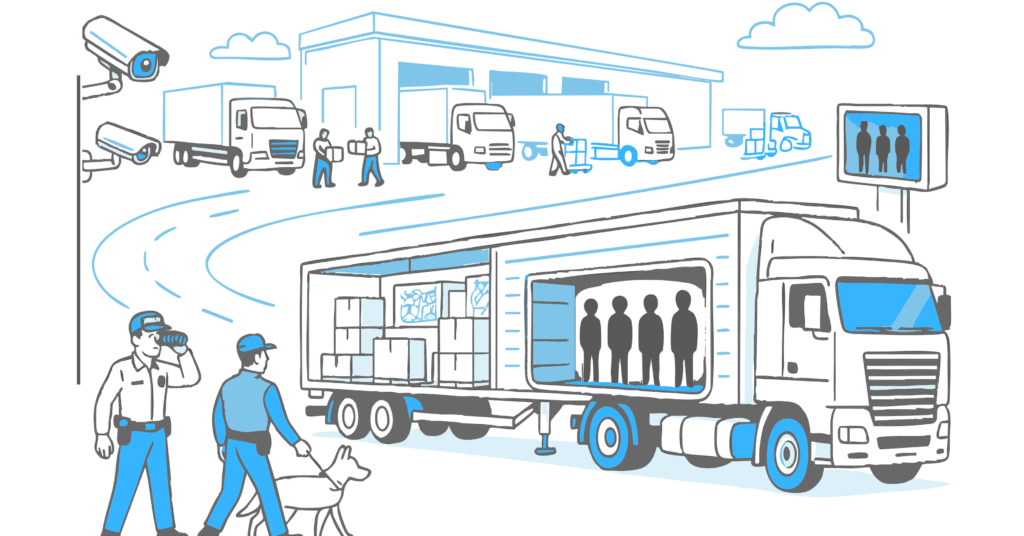Trucking Human Trafficking: Hidden Risks in the Industry

Trucking human trafficking is a growing risk that harms people and puts businesses in danger. Traffickers hide within legitimate trucking operations, using freight routes, subcontractors, and remote stops as cover. Most fleets run responsibly, but even one oversight can expose a company to legal, financial, and reputational damage. This guide explains why traffickers target the trucking industry, the tactics they use, and how companies can fight back with training, strong policies, and industry partnerships.
Quick Answer
Traffickers exploit trucking because it offers wide coverage, legitimate cover, and remote stops. Fleets can prevent human trafficking by training drivers, screening hires and subcontractors, forming partnerships with groups like Truckers Against Trafficking, and building a culture where safety is always prioritized.
Why Traffickers Target the Trucking Industry
Trucking offers traffickers multiple opportunities:
- Broad coverage: Trucks cross borders and states, letting traffickers move victims long distances.
- Legitimate cover: Criminals set up trucking companies to look normal while hiding exploitation.
- Remote areas: victims can be hidden or transferred at rest stops with little oversight.
- Subcontracting risks: Large firms may not fully vet subcontractors, leaving gaps traffickers exploit.
Real-World Example: A California Case
In 2019, a small California trucking company looked legitimate on paper. It had contracts, trucks, and documents. But the owners were secretly transporting trafficking victims across state lines. The victims were promised construction and restaurant jobs but were instead coerced into forced labor. Because the company appeared legitimate, law enforcement initially did not suspect it. The case came to light only after a victim escaped and reported it. Police arrested the traffickers and rescued more than a dozen people. This case shows how trucking can be misused and why vigilance matters.
How Traffickers Hide in Businesses
Traffickers use common strategies to stay hidden:
- Fake recruitment: Victims are lured with false job offers, then transported on freight routes.
- Front companies: Fake trucking firms look clean on paper while hiding trafficking.
- Driver exploitation: Vulnerable drivers may face unfair contracts, threats, and abuse.
- Freight networks: Victims are moved alongside real loads or in hidden compartments.
The Consequences for Trucking Companies
Being linked to human trafficking brings severe consequences:
- Legal action: Companies and owners face trafficking charges and jail time.
- License loss: Authorities can revoke business permits and contracts.
- Financial ruin: Victims may sue, and equipment may be seized.
- Reputation harm: Even unintentional links to trafficking can destroy trust with shippers.
Lessons from Industry Initiatives
The industry is taking steps to fight back. Groups like Truckers Against Trafficking (https://truckersagainsttrafficking.org/) train drivers to recognize and report trafficking. The Federal Motor Carrier Safety Administration (FMCSA) also shares safety resources at https://www.fmcsa.dot.gov/.
In 2024, a truck driver in Michigan noticed suspicious behavior at a rest stop and called authorities. His report led to the rescue of a missing girl and the arrest of traffickers. This proves how awareness and quick reporting can save lives.
What Trucking Companies Can Do
Fleets can take proactive measures to prevent trafficking:
- Train employees and drivers: Teach warning signs such as fearful passengers or people unable to speak freely.
- Provide hotline numbers: Post the National Human Trafficking Hotline (1-888-373-7888) in trucks and offices.
- Screen staff and subcontractors: Vet hires and partners carefully, avoid deals that look too cheap.
- Form alliances: Partner with TAT and local law enforcement, encourage drivers to report concerns.
- Promote a safety culture: Make it clear that compliance and safety come before shortcuts.
FAQs on Trucking Human Trafficking Risks
Why does trafficking affect trucking?
- Because trucks move across states, traffickers use routes to transport victims hidden behind freight.
Can small fleets be at risk?
- Yes, traffickers often target smaller carriers with fewer compliance checks.
What can drivers do if they suspect trafficking?
- Call the National Human Trafficking Hotline or local law enforcement, and report what they saw.
Does training really help?
- Yes. Thousands of drivers trained by TAT have already helped identify and stop cases.
Are there legal protections for drivers who report?
- Yes, most states protect whistleblowers who report suspected trafficking in good faith.
Final Thoughts
Human trafficking is one of the worst crimes facing society. Traffickers exploit the reach of trucking to hide their operations. But fleets can fight back. By training staff, screening hires, forming partnerships, and building safety into daily culture, companies protect not only themselves but also communities. Every suspicious call counts.
